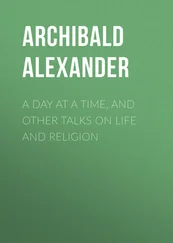Alexander Todd - A Time to Remember
Здесь есть возможность читать онлайн «Alexander Todd - A Time to Remember» весь текст электронной книги совершенно бесплатно (целиком полную версию без сокращений). В некоторых случаях можно слушать аудио, скачать через торрент в формате fb2 и присутствует краткое содержание. Город: Cambridge, Год выпуска: 1983, ISBN: 1983, Издательство: Cambridge University Press, Жанр: Химия, Биографии и Мемуары, на английском языке. Описание произведения, (предисловие) а так же отзывы посетителей доступны на портале библиотеки ЛибКат.
- Название:A Time to Remember
- Автор:
- Издательство:Cambridge University Press
- Жанр:
- Год:1983
- Город:Cambridge
- ISBN:0 521 25593 7
- Рейтинг книги:3 / 5. Голосов: 1
-
Избранное:Добавить в избранное
- Отзывы:
-
Ваша оценка:
- 60
- 1
- 2
- 3
- 4
- 5
A Time to Remember: краткое содержание, описание и аннотация
Предлагаем к чтению аннотацию, описание, краткое содержание или предисловие (зависит от того, что написал сам автор книги «A Time to Remember»). Если вы не нашли необходимую информацию о книге — напишите в комментариях, мы постараемся отыскать её.
A Time to Remember — читать онлайн бесплатно полную книгу (весь текст) целиком
Ниже представлен текст книги, разбитый по страницам. Система сохранения места последней прочитанной страницы, позволяет с удобством читать онлайн бесплатно книгу «A Time to Remember», без необходимости каждый раз заново искать на чём Вы остановились. Поставьте закладку, и сможете в любой момент перейти на страницу, на которой закончили чтение.
Интервал:
Закладка:
When I resigned the chairmanship of the Advisory Council on Scientific Policy I thought that, apart from occasional participation in the affairs of the House of Lords, I would thereafter be clear of government commitments. In this I was soon to be proved wrong, and, in 1965, I found myself chairman of a Royal Commission on Medical Education. Such a Commission was admittedly long overdue, since there had been no comprehensive study of the subject since Abraham Flexner's report, which was published in the United States in 1925, and the last review of the position in this country was that of the Goodenough Committee in 1942-4; moreover, there was a good deal of unease about the supply of doctors in the United Kingdom, and the ever-growing reliance on immigrant doctors to keep our health services going. I confess that I was at first surprised at being asked to undertake this task; further consideration, however, led me to the view that I had qualifications which made me a rather obvious candidate. For one thing, not being a member of the medical profession, I had no axe to grind; I was also experienced in work with government and government departments, and, in my scientific career, I had always had close contact with the medical sciences and academic medicine. In addition, of course, I had, through Sir Henry Dale and the Nuffield Foundation, many other contacts with the world of medicine, and I was fortunate in having a first-class body of members of my Commission -able, imaginative and hard-working men and women - to all of whom I am deeply grateful, and whose continuing friendship I cherish.
The report of the Interdepartmental Committee on Medical Schools (the Goodenough Committee) reflected the growing dissatisfaction with many features of medical education at that time; the changes made as a result of it were smaller than had been hoped, partly because of the incidental effects of the National Health Service Acts. The institution of the National Health Service must rank as one of the greatest social advances in our history but, for a variety of reasons, its institution was bound to involve acceptance, at least for a time, of the main features of existing medical education and the structure of the profession, not all of which were desirable. The Commission was, therefore, faced with a formidable task which we completed in about two and a half years.
In the course of our studies we took evidence from around 400 individuals and organisations and visited medical schools in the United Kingdom and in a number of other countries; we also examined the various systems of medical care currently in operation, from the highly centralised polyclinic systems of the Soviet Union and other East European countries, to the Kaiser Health Plan in California, and the rather complex hospital system in Japan. Our studies had their lighter moments. On questioning representatives of the Physiological and Anatomical Societies as to the amount of time which should be devoted to their respective disciplines in an undergraduate medical course, the only answer I could elicit was that each of them wanted no less time than the other. Again it was interesting to be told that the chairman of the General Medical Council in the United Kingdom and the French Minister of Health were both slightly worried about the possibility of Britain joining the European Economic Community. The one felt that Britain might be flooded with ill-trained doctors from France, and the other that France might be similarly flooded with ill-trained doctors from England.
It was clear to me from the outset that recommendations made by the Commission would be of little value unless they provided an adequate answer to the country's need, not just in the immediate future, but for at least a couple of generations. We therefore had to develop a picture of a likely pattern of medical care in the future, and to use it in forecasting both manpower needs and the general pattern of medical education, which was sorely in need of review. The education of a doctor, originally little more than an apprenticeship in which the aspiring student 'walked the wards' with leading practitioners, has retained more of this character than most other professions. The Medical Act of 1858, which still largely dominated medical education when the Commission began its work, was drafted on the assumption that at the end of a few years' undergraduate training, the emergent doctor would be sufficiently competent in medicine, surgery and midwifery, to set himself up in general practice. This assumption, long since totally unrealistic, depended on the view that the essential object of the undergraduate medical course was to produce a safe and competent general practitioner. Not until 1967 did the General Medical Council make any substantial changes in this system of education, which, over the years, had militated against the institution of postgraduate training, and had consolidated the division between the consultant physician or surgeon practising in the major hospitals, and the general practitioner who was without access to beds, and professionally considered to be of inferior status. We clearly could not put matters right at a stroke, but, in our report issued in the spring of 1968, we set out a series of proposed changes (largely a distillate of the views we had received from those who gave evidence) which would, in due course, lead to the desired end. This is hardly the place to discuss these in detail, but, basically, we recommended reorganisation and broadening of the undergraduate curriculum, the introduction of organised postgraduate professional training for all specialities (including general practice) together with some changes in the existing career structure and the introduction of vocational registration.
We devoted a section of our report to the problems of medical education in London with its twelve medical schools, and their associated teaching hospitals, for the most part located within a small area of dwindling population. Our proposals involved reducing the number of schools to six by a process of twinning, and the association of each of the new schools with a multifaculty institution. These proposals were violently opposed by the medical traditionalists, and by the then Principal of the University of London, and were therefore in effect rejected, although, with the passage of time, some parts of our ideas have been put into effect (e.g. in the case of St Bartholomew's Hospital, the London Hospital and Queen Mary College) and I have no doubt that in time more mergers will occur. I found it difficult not to be amused when, in 1979-80, the situation in London had become so manifestly unsatisfactory (as I knew it would if our proposals were ignored) that a new committee under Lord Flowers was set up by the University of London to examine it afresh. The solution proposed by Lord Flowers and his colleagues differed little in general principle from ours, save that they laid no stress on association with multifaculty institutions; like us, they proposed the pairing and amalgamation of the London medical schools, but they also recommended the closure of one of them (the Westminster), a recommendation bound to cause a storm.
My own belief is that the Todd Report, had it been acted upon promptly, would have given a better long-term solution, but, however that may be, the Flowers Report has been attacked by the medical traditionalists just as ours was, even after the lapse of ten years during which conditions had further deteriorated. The failure to follow the recommendations of Todd or Flowers, or a distillate of both, will merely postpone and render even more difficult the inevitable reorganisation of medical education in London. It is amazing how ostrich-like our medical colleagues can be!
It was not to be expected that the report of a Commission such as ours would be 'accepted' by government, for much of it dealt with matters over which government could have no control. Government did, however, accept our recommendation that new clinical schools should be instituted in the Universities of Cambridge, Southampton and Leicester, all of which are now in being, giving us the capacity more nearly to meet the growth of demand for doctors in the future. Despite suggestions to the contrary in recent public statements, I still believe that our estimates of demand will be in due course vindicated. Recent changes in the organisation of the National Health Service are also moving in the direction we suggested. In other areas, too, I am not dissatisfied with the progress made since our Report was published; there have been substantial reforms in undergraduate teaching courses, and postgraduate training has undergone much development. It is true that our views on the career structure in medicine have not yet found favour, but it is my own view that they will be adopted in due time; professions as long established and as conservative as medicine are invariably slow to move.
Читать дальшеИнтервал:
Закладка:
Похожие книги на «A Time to Remember»
Представляем Вашему вниманию похожие книги на «A Time to Remember» списком для выбора. Мы отобрали схожую по названию и смыслу литературу в надежде предоставить читателям больше вариантов отыскать новые, интересные, ещё непрочитанные произведения.
Обсуждение, отзывы о книге «A Time to Remember» и просто собственные мнения читателей. Оставьте ваши комментарии, напишите, что Вы думаете о произведении, его смысле или главных героях. Укажите что конкретно понравилось, а что нет, и почему Вы так считаете.










